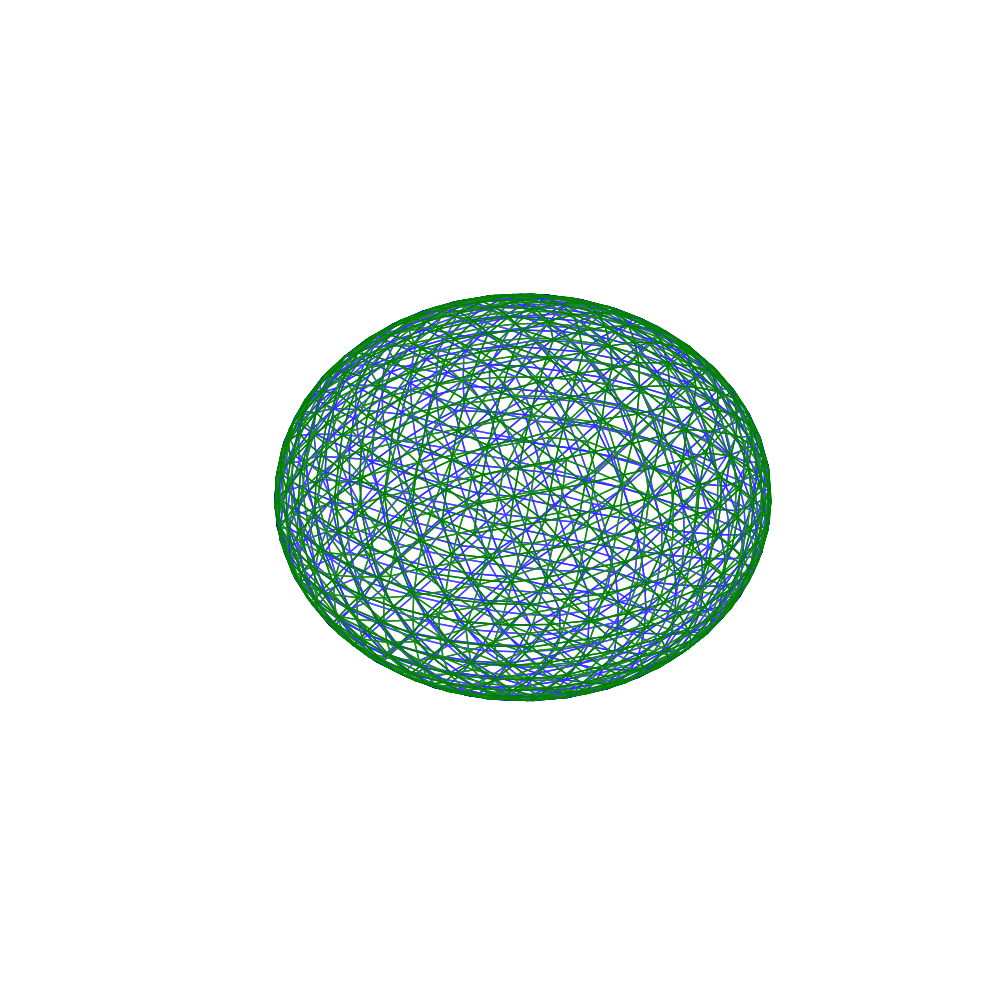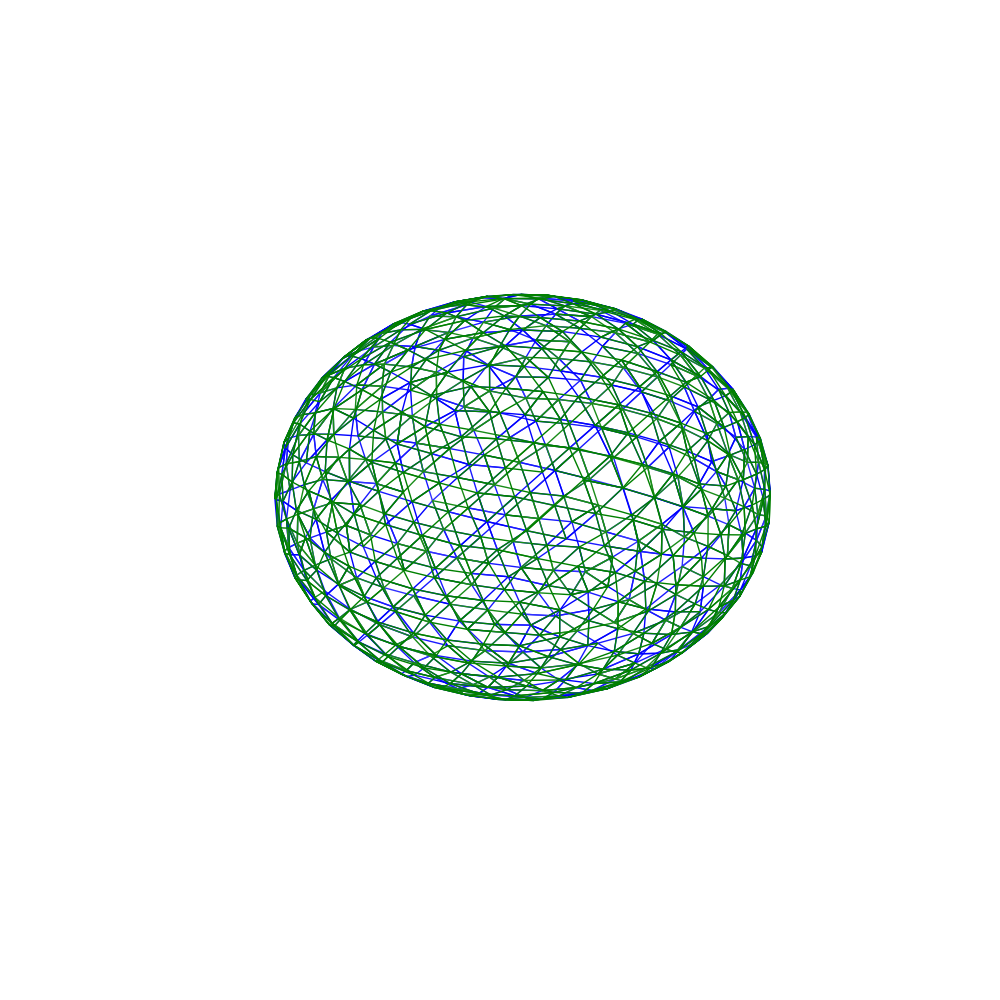Deep learning for NeuroImaging in Python.
Note
Go to the end to download the full example code.
Icosahedron matching¶
Credit: C Ambroise
A simple example on how to match two icosahedrons of the same order.
import os
import math
import warnings
import numpy as np
from scipy.spatial import transform
import matplotlib.pyplot as plt
from mpl_toolkits.mplot3d import axes3d
from surfify.plotting import plot_trisurf
from surfify.utils import icosahedron, ico2ico
We first build the reference icosahedron.
order = 3
vertices_norm, triangles_norm = icosahedron(order, standard_ico=True)
print(vertices_norm.shape, triangles_norm.shape)
(642, 3) (1280, 3)
Then we fetch freesurfer’s icosahedron of the same order.
vertices, triangles = icosahedron(order)
print(vertices.shape, triangles.shape)
(642, 3) (1280, 3)
We try to find the optimal rotation between the two icosahedrons using the scipy module.
rotation, rmse = transform.Rotation.align_vectors(vertices_norm, vertices)
print(rmse)
29.54571598073452
Okay, does not seem to be working, because the rmse is supposed to be very close or equal to zero
We print the vertices to try to find the issue here: it seems that the order of the vertices is not the same in the two matrices. That is why the previous algorithm did not work properly, since it can only match to the corresponding row in the other matrix.
print(vertices_norm)
print(vertices)
[[-0.52573111 0.85065081 0. ]
[ 0.52573111 0.85065081 0. ]
[-0.52573111 -0.85065081 0. ]
...
[ 0.96386126 0.2664047 0. ]
[ 0.91298249 0.39960705 -0.08232358]
[ 0.91298249 0.39960705 0.08232358]]
[[ 0. 0. 1. ]
[ 0.8944 0. 0.4472]
[ 0.2764 0.8507 0.4472]
...
[ 0.1815 0.296 -0.9378]
[ 0.0272 0.3462 -0.9378]
[ 0.0692 0.213 -0.9746]]
Here we plot the sufaces together to show that they have the same structure but their vertices are not at the same places.
fig, ax = plt.subplots(1, 1, subplot_kw={
"projection": "3d", "aspect": "auto"}, figsize=(10, 10))
plot_trisurf(vertices_norm, triangles_norm, fig=fig, ax=ax, alpha=0.3,
edgecolors="blue")
plot_trisurf(vertices, triangles, fig=fig, ax=ax, alpha=0.3,
edgecolors="green")

To compute the rotation between the two structures, we do not need all the vertices. So we consider a small subset of 4 points that have correspondances in both icosahedrons (for instance they have the same absolute values, only sign differs, for each dimension). The 4 firsts work for the reference icosahedron.
vertices_of_interest_norm = vertices_norm[:4]
Now we search for 4 similar vertices in the FreeSurfer icosahedron.
for i in range(len(vertices)):
coords_of_interest = vertices[i]
idx_of_interest = (np.abs(vertices) == np.abs(coords_of_interest)).all(1)
if idx_of_interest.sum() == 4:
vertices_of_interest = vertices[idx_of_interest]
fs_row_idx = i
break
print(fs_row_idx)
2
Now we need to find a rotation between these two set of points. Many can be possible, depending on the ordering of the points. To do this, we compute the optimal rotation matrix between our reference points and the others variously permuted, until we find a rotation that works.
import itertools
permutations = itertools.permutations(range(4))
n_permutations = math.factorial(4)
it = 0
best_rmse = rmse
best_rotation = rotation
while rmse > 0 and it < n_permutations:
it += 1
order = np.array(next(permutations))
with warnings.catch_warnings():
warnings.simplefilter("ignore", category=UserWarning)
rotation, rmse = transform.Rotation.align_vectors(
vertices_of_interest_norm, vertices_of_interest[order])
if rmse < best_rmse:
best_rmse = rmse
best_rotation = rotation
print("Number of permutations tested {}/{}".format(it, math.factorial(4)))
print(best_rotation.as_matrix())
print(best_rmse)
Number of permutations tested 24/24
[[-0.52575203 0. -0.85063788]
[ 0. 1. 0. ]
[ 0.85063788 0. -0.52575203]]
9.971395685383565e-05
Now we found a rotation that works, we can simply apply it to the icosahedron so it matches the reference one.
fig, ax = plt.subplots(1, 1, subplot_kw={
"projection": "3d", "aspect": "auto"}, figsize=(10, 10))
plot_trisurf(vertices_norm, triangles_norm, fig=fig, ax=ax, alpha=0.3,
edgecolors="blue")
plot_trisurf(best_rotation.apply(vertices), triangles, fig=fig, ax=ax,
alpha=0.3, edgecolors="green")

To easily solve the issue outlined in this example, you can find a function in the surfify.utils module. ico2ico allows you to find a proper rotation between a reference icosahedron and another one. We plot only half of the triangles of each icosahedron so it clearly appears that they are the same.
rotation = ico2ico(vertices, vertices_norm)
fig, ax = plt.subplots(1, 1, subplot_kw={
"projection": "3d", "aspect": "auto"}, figsize=(10, 10))
plot_trisurf(vertices_norm, triangles_norm[::2], fig=fig, ax=ax, alpha=0.3,
edgecolors="blue")
plot_trisurf(rotation.apply(vertices), triangles[::2], fig=fig, ax=ax,
alpha=0.3, edgecolors="green")
plt.show()

/opt/hostedtoolcache/Python/3.12.11/x64/lib/python3.12/site-packages/surfify/utils/coord.py:246: UserWarning: A proper mapping between the two icosahedrons could not be found. The closest rotation has a rmse of 0.9190925817849288.
warnings.warn(
Total running time of the script: (0 minutes 2.903 seconds)
Estimated memory usage: 67 MB
Follow us
